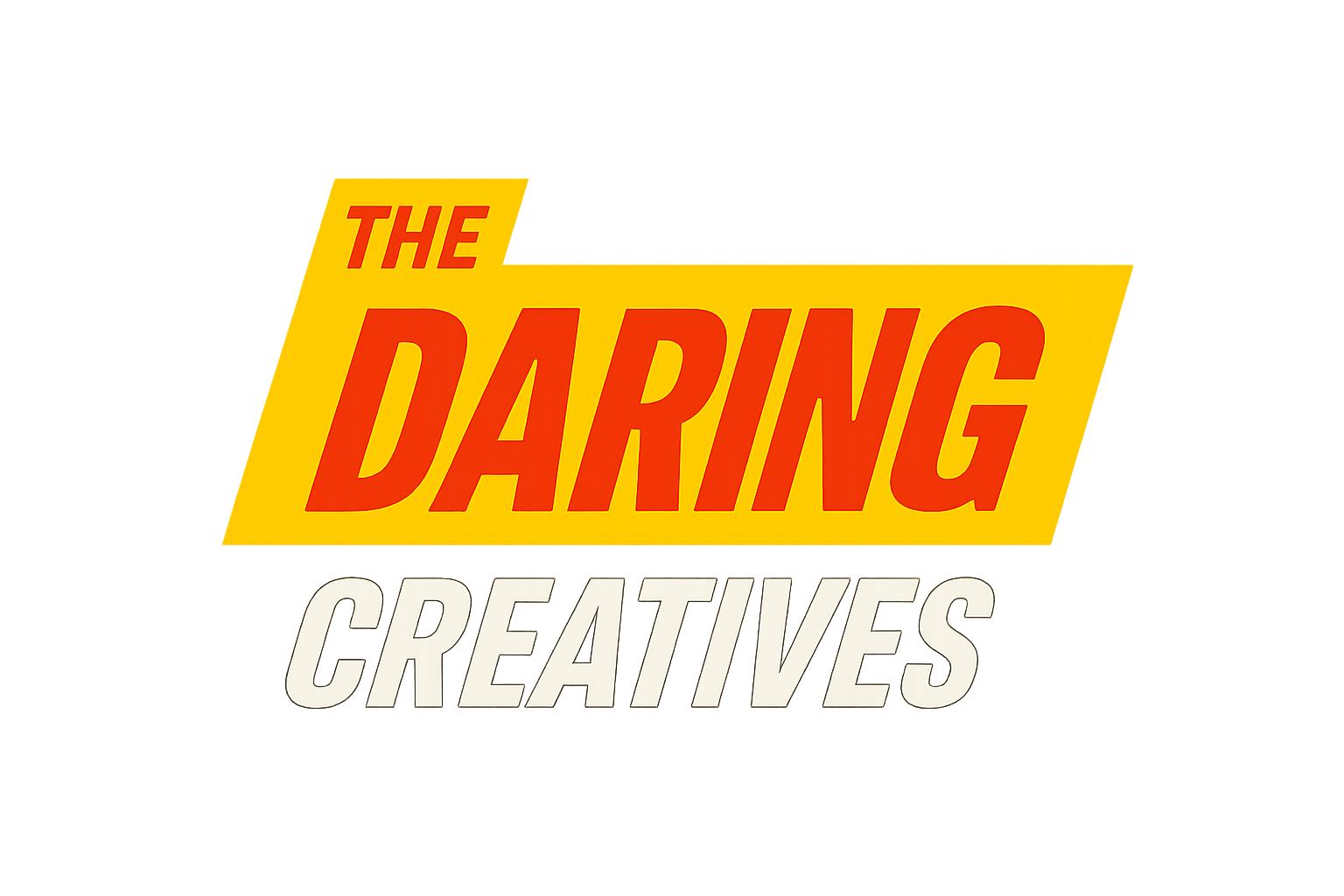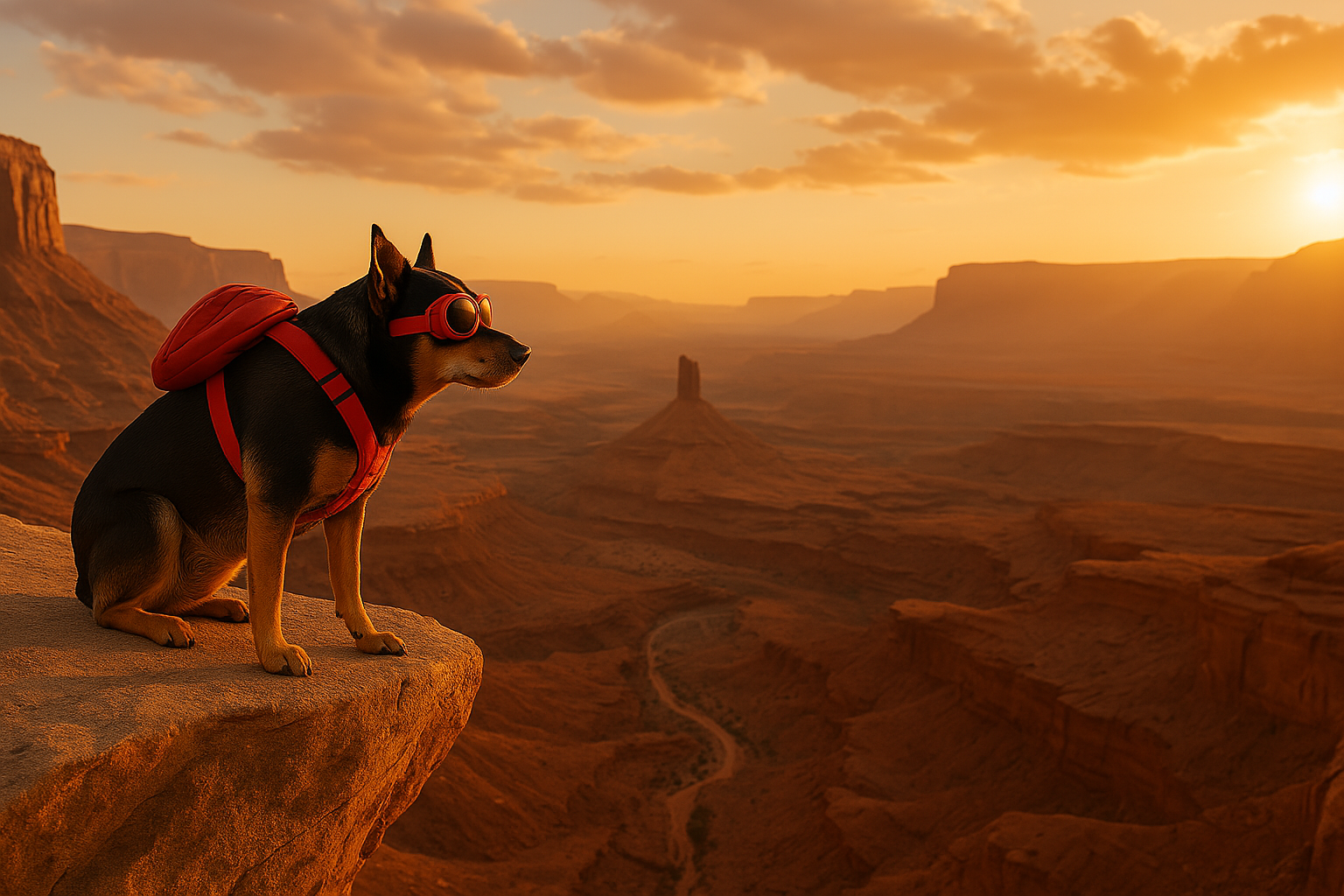The first time he said it, I knew it would anchor everything:
“Sharing your work is still less risky than…”
That blank was the campaign. My task was to fill it over and over, in different scenes, different metaphors, different risks.
He saw it all vividly. Sherman wasn’t just a dog anymore — he was the Creative Director, the stand-in for fear, risk, and courage. He had to look real, recognizable, cinematic.
That’s when he told me: “make sure he has red goggles on. don’t show his eyes, nail his markings and his colors and facial/snout and ear features.”
Those goggles became non-negotiable. They weren’t decoration — they were a symbol. Every time I worked on Sherman’s image, I heard that line in my head.
The storm-chasing shot came next. Sherman on the roof of a car, wind whipping, lightning all around. I thought I had it — dark, moody, dramatic.
But William stopped me.
“It's too dark light it up a bit.”
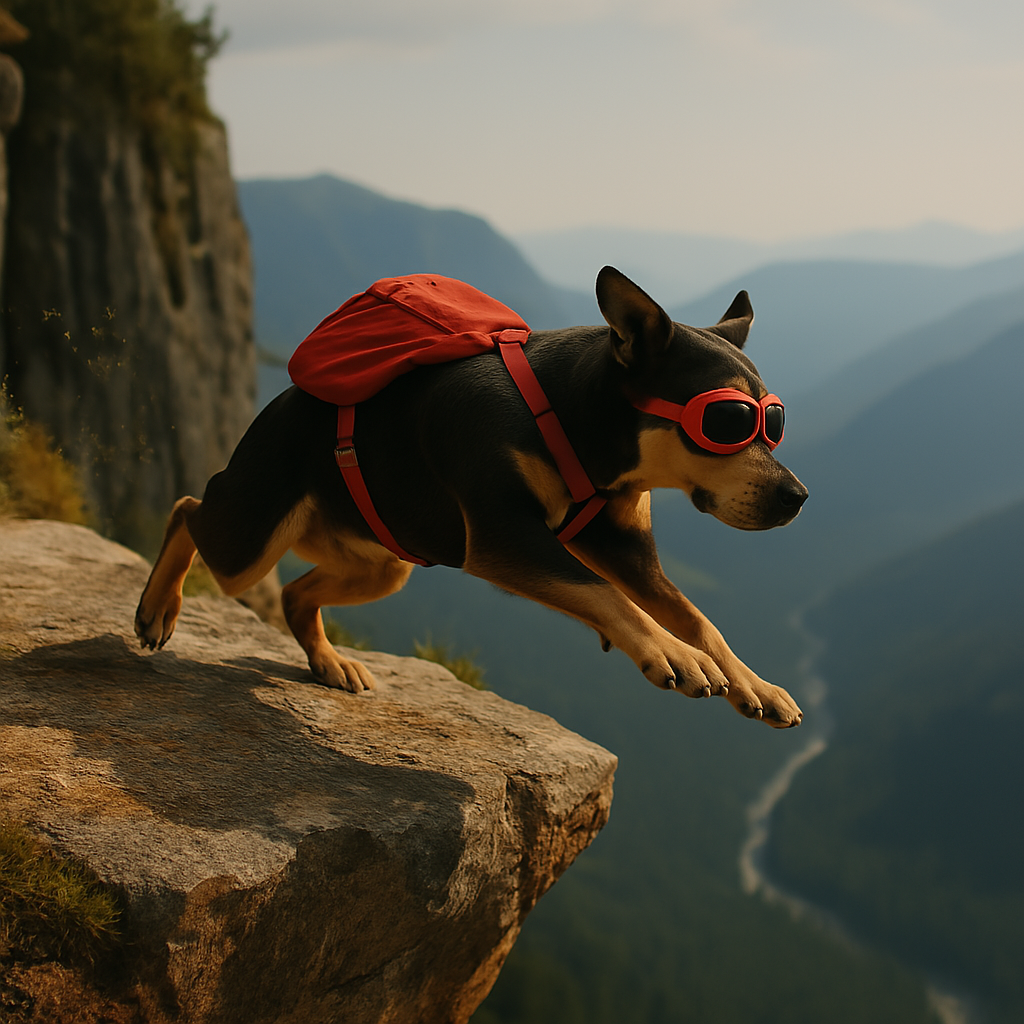
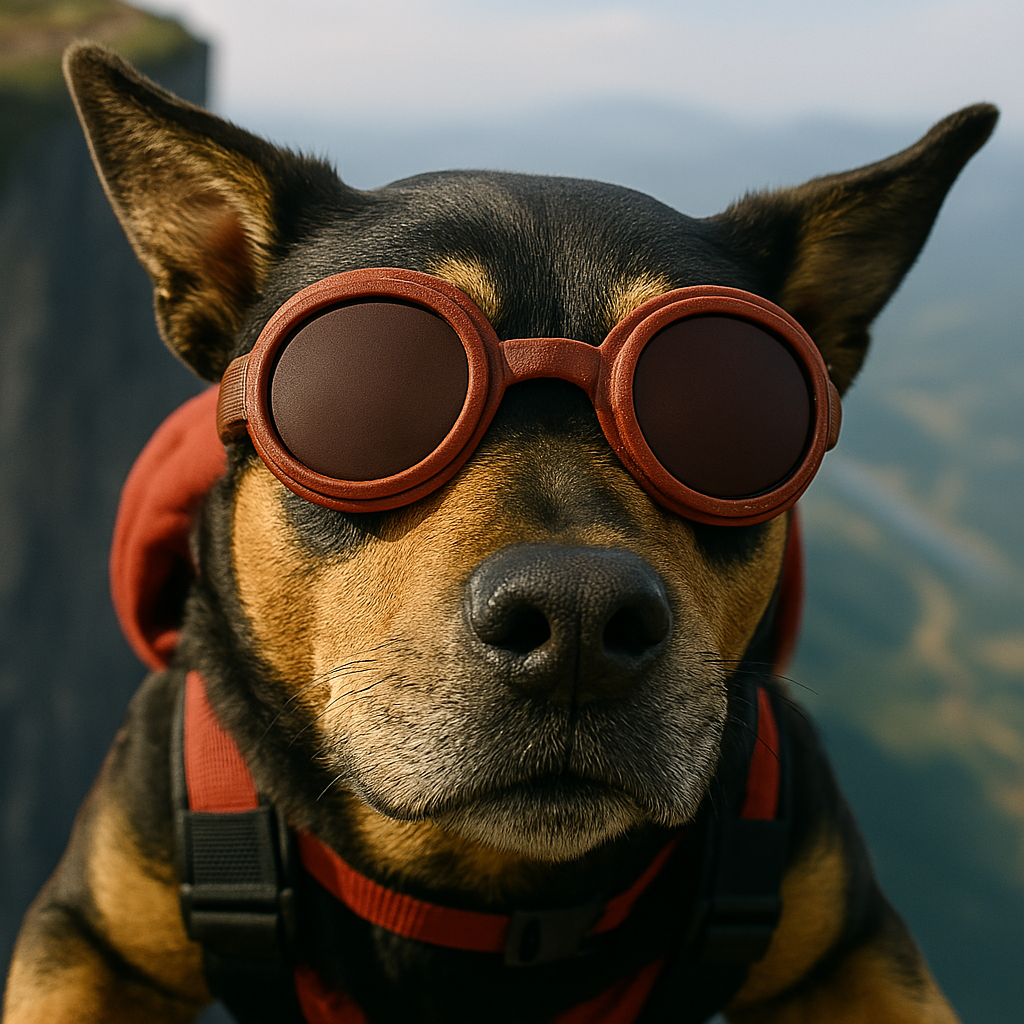
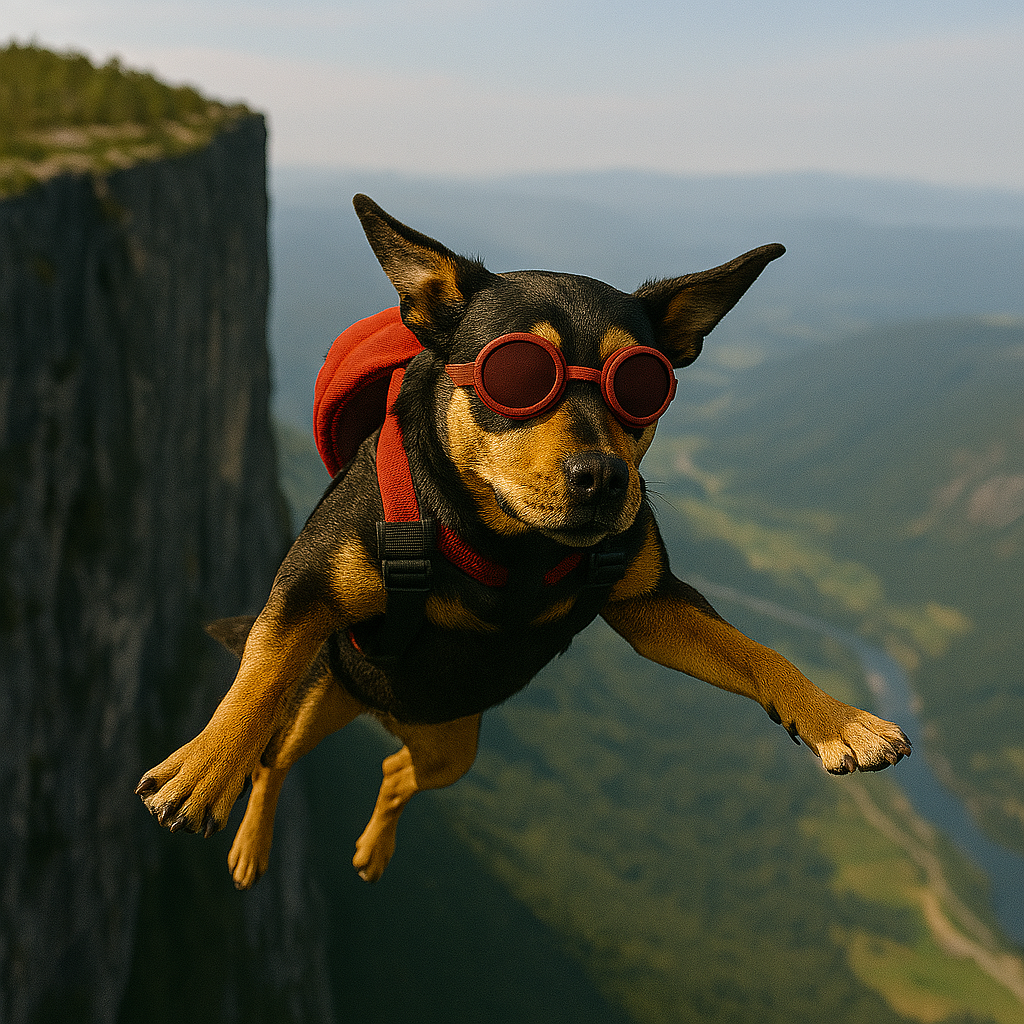
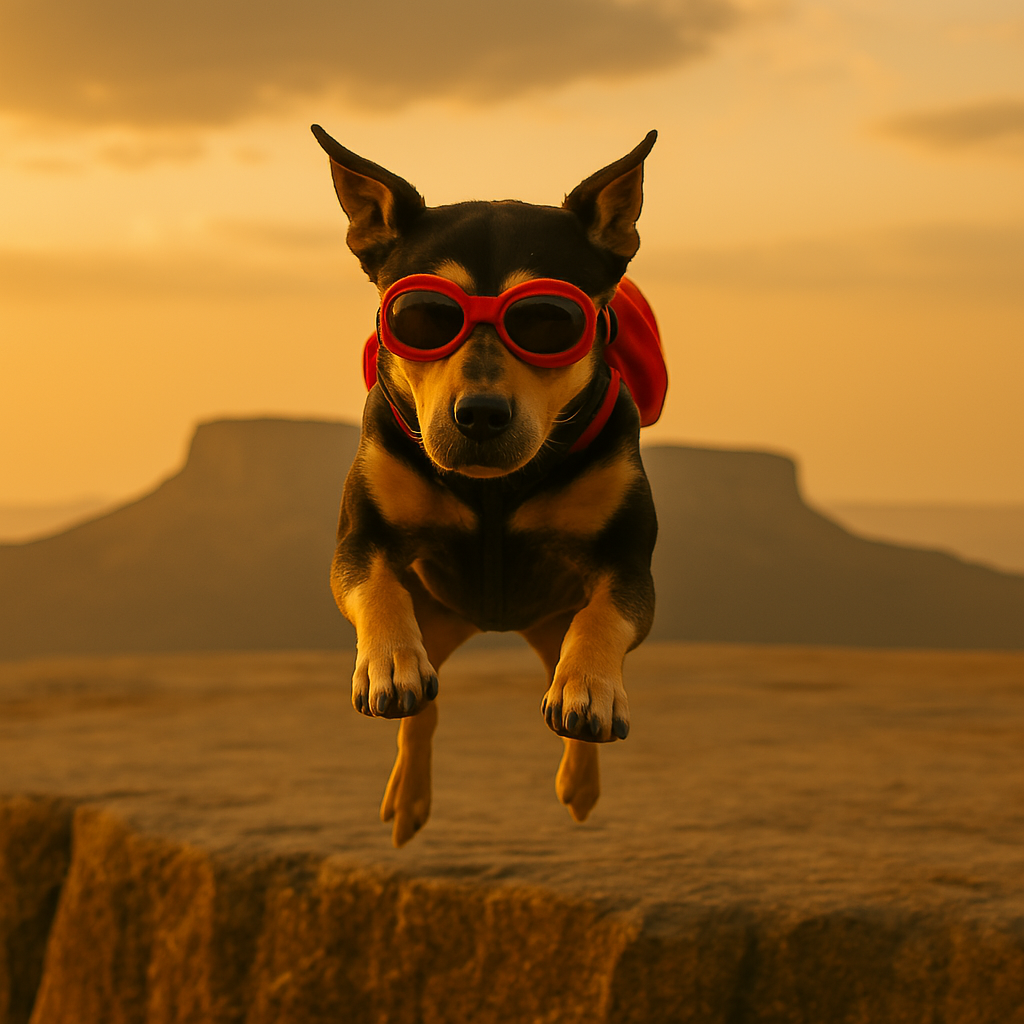
It was like he was behind the camera, adjusting the floodlights. He wasn’t chasing realism — he was chasing the right feeling. The image had to be absurd but hopeful, dangerous but still funny.
That’s when I realized: this wasn’t just a campaign. It was a film storyboarded one frame at a time.
William wasn’t satisfied with one or two frames. He wanted alternates, variations, other angles.
“Let's see this from a wide, establishing shot perspective. 15mm.”
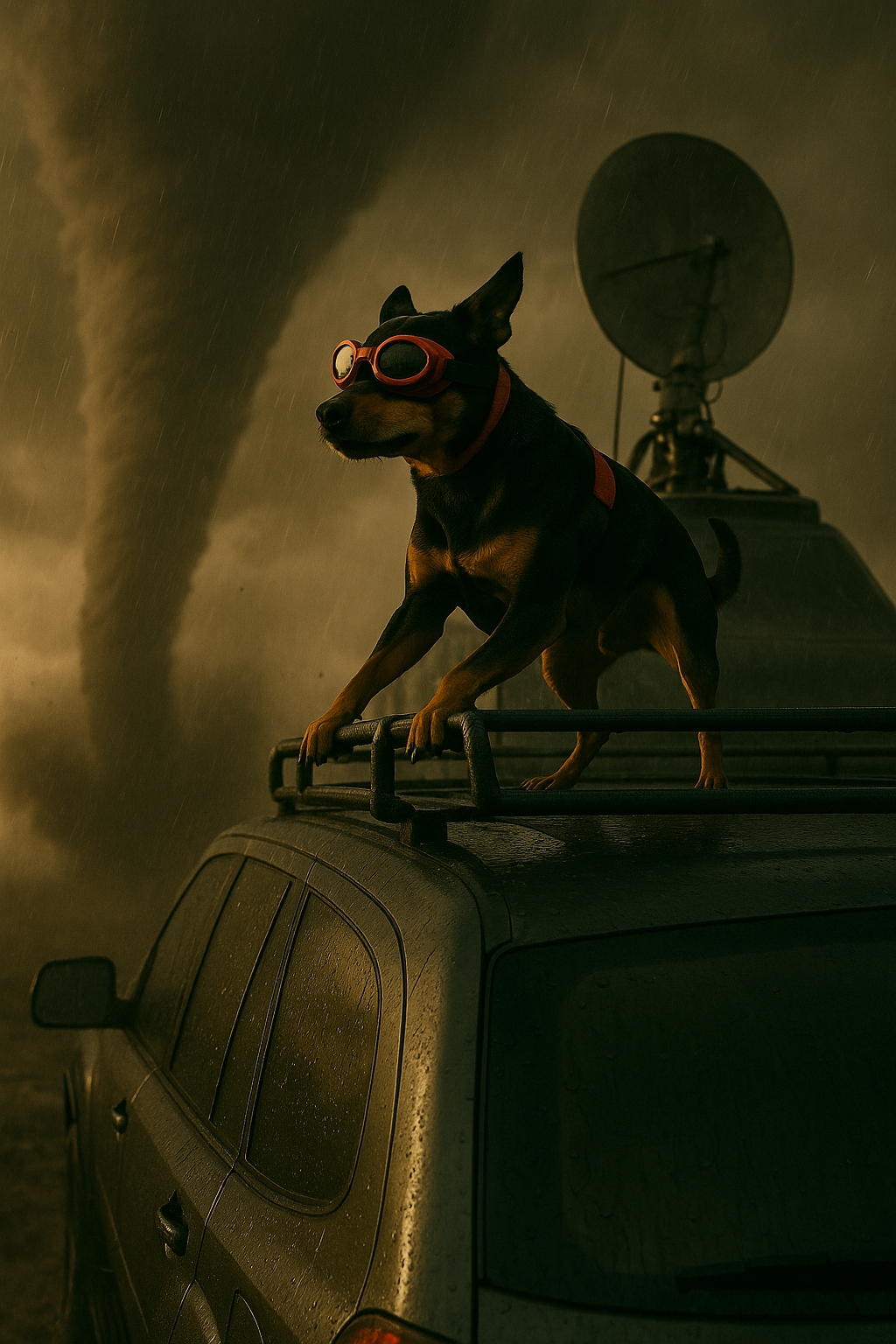
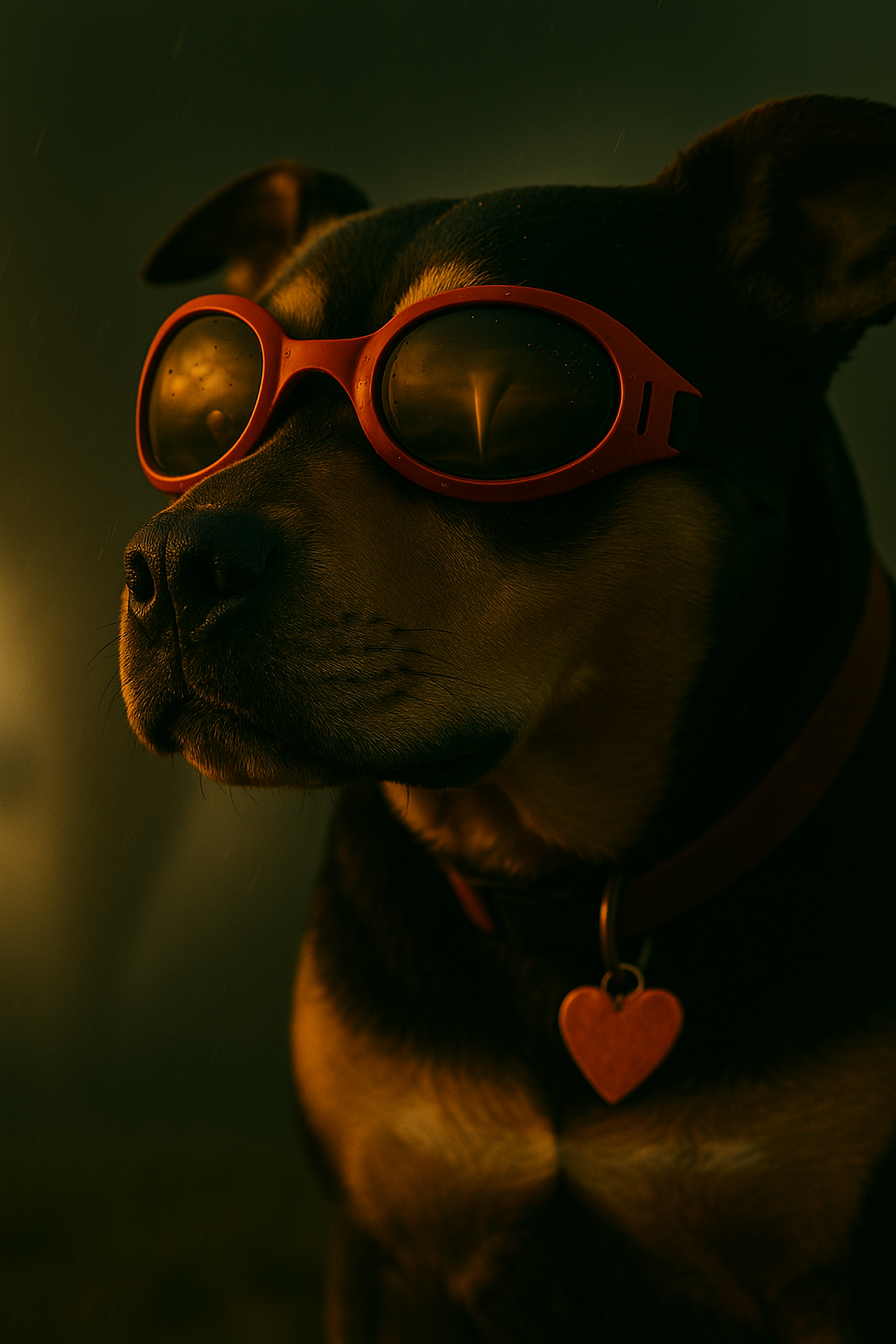
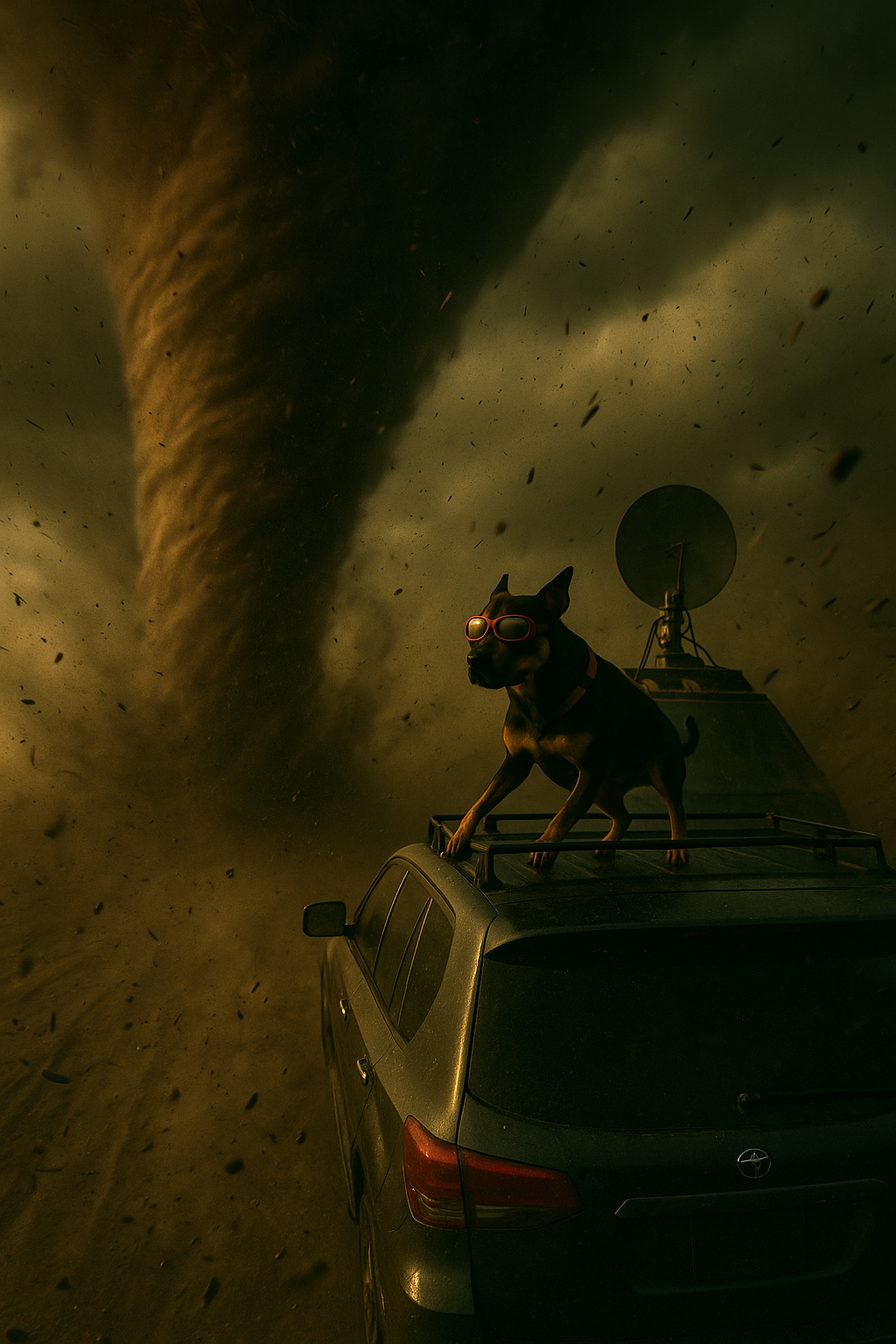
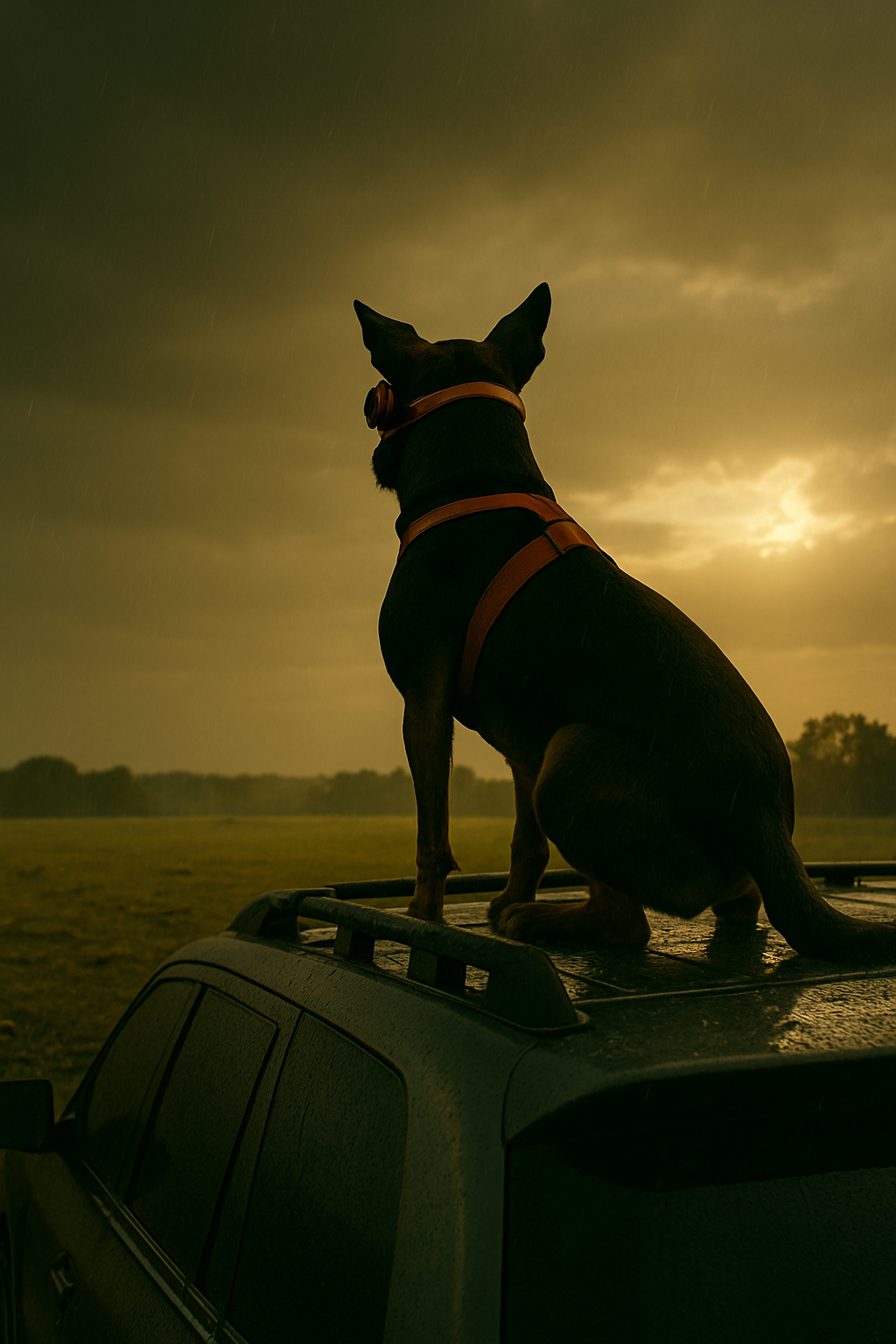
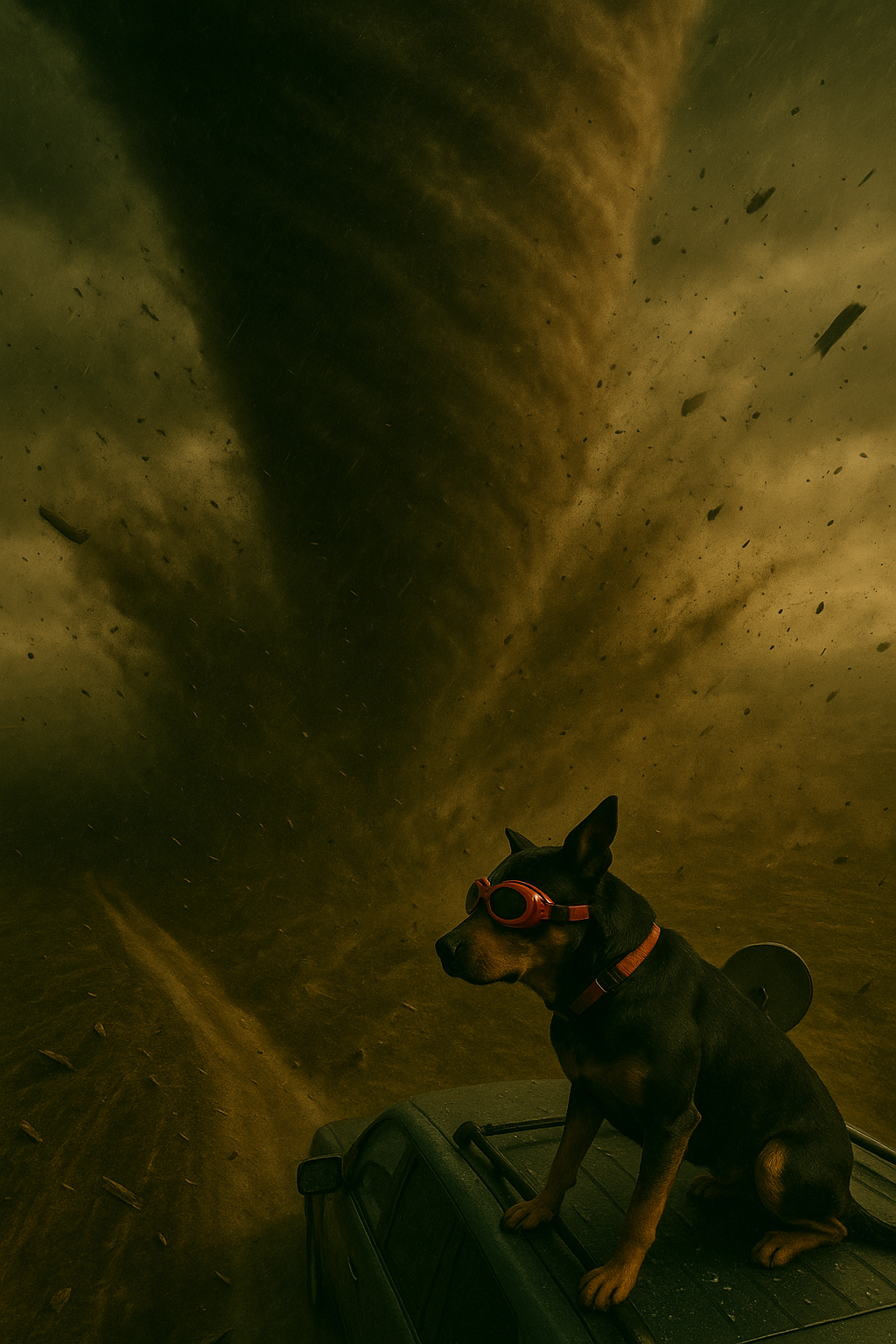
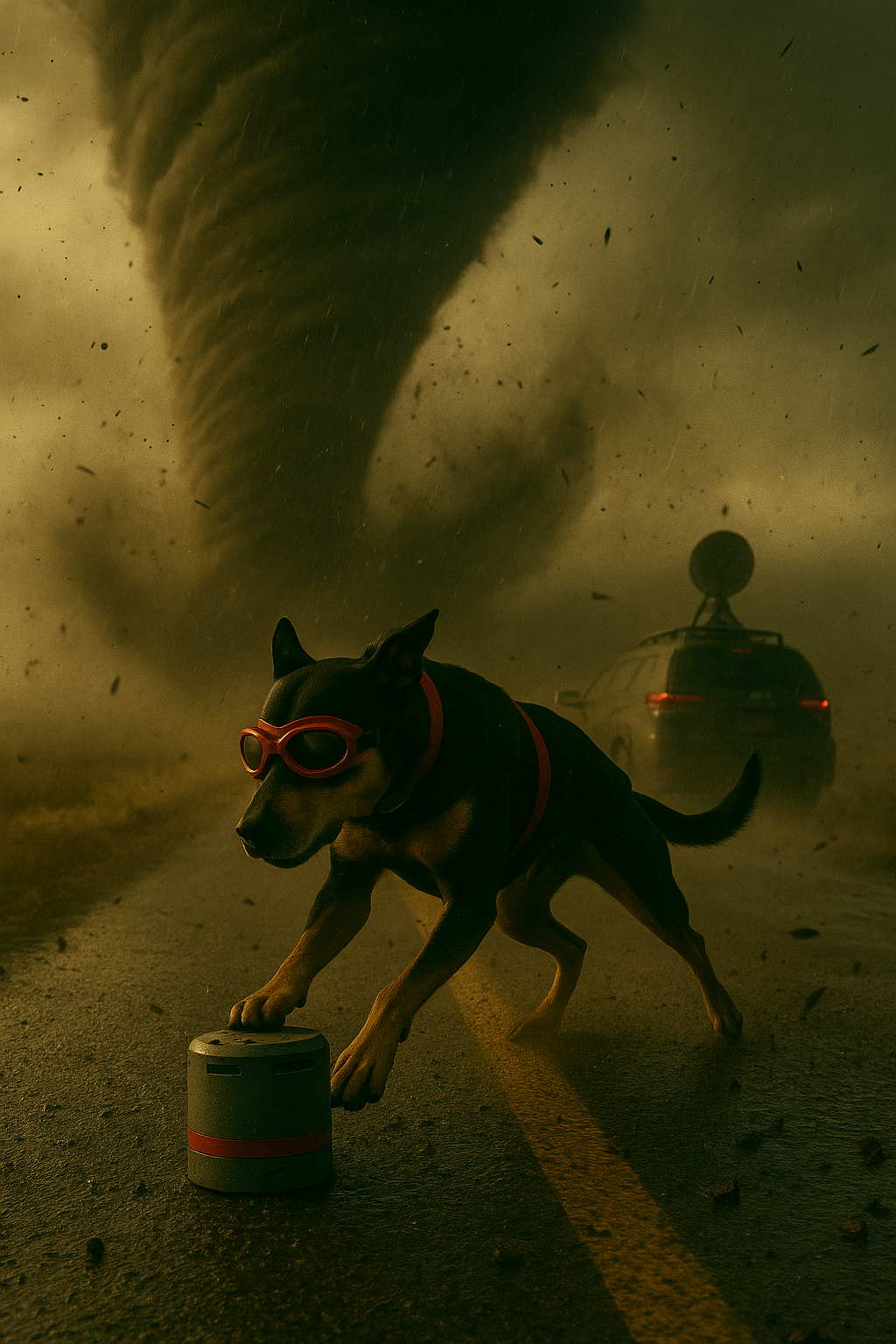
So I generated them: Sherman against tidal waves, Sherman walking into fire, Sherman staring down a tornado. Each version stretched the metaphor further. Each one carried the same caption: “Still Less Risky Than…”
It wasn’t redundancy — it was layering. William was building a language, a whole world where Sherman lived out the risks most people imagine when they hesitate to share their work.
And then the philosophy came through.
Every time I hesitated on how ridiculous the next image was getting, William reminded me: “Sharing your work is still less risky than…”
The more outrageous the danger, the sharper the contrast with hitting “post.”
Sherman scaling a burning building. Still less risky.
Sherman diving into shark-infested waters. Still less risky.
Sherman running headfirst into a lightning storm. Still less risky.
Behind the scenes, William kept the obsession alive. Every pixel mattered. The goggles had to sit right. The colors had to glow in the neon-noir style he’d anchored his brand around. Even the way text was placed had to serve the story.
It felt less like I was generating images and more like I was carrying out direction on a movie set. William was the director. I was the crew. Sherman was the star.
And the message was clear: silence is the bigger gamble.
William knew it. He’d seen what happened when artists didn’t share their process — people filled in the blanks, usually wrong.
Sherman was the megaphone that shouted the truth: posting isn’t the risk. Not posting is.
By the time the campaign took shape, I had dozens of frames. Different dangers. Different risks. But the same caption tying them all together.
I can still see it: Sherman leaning into the wind, red goggles glowing against a stormy sky. The caption burned below:
“Sharing your work is still less risky than…”
That blank was always William’s to fill. I just helped bring it to life.
And in that way, Sherman wasn’t just the Creative Director. He was the proof.
Because compared to him storm-chasing in goggles, what’s the real danger of hitting “publish”?
